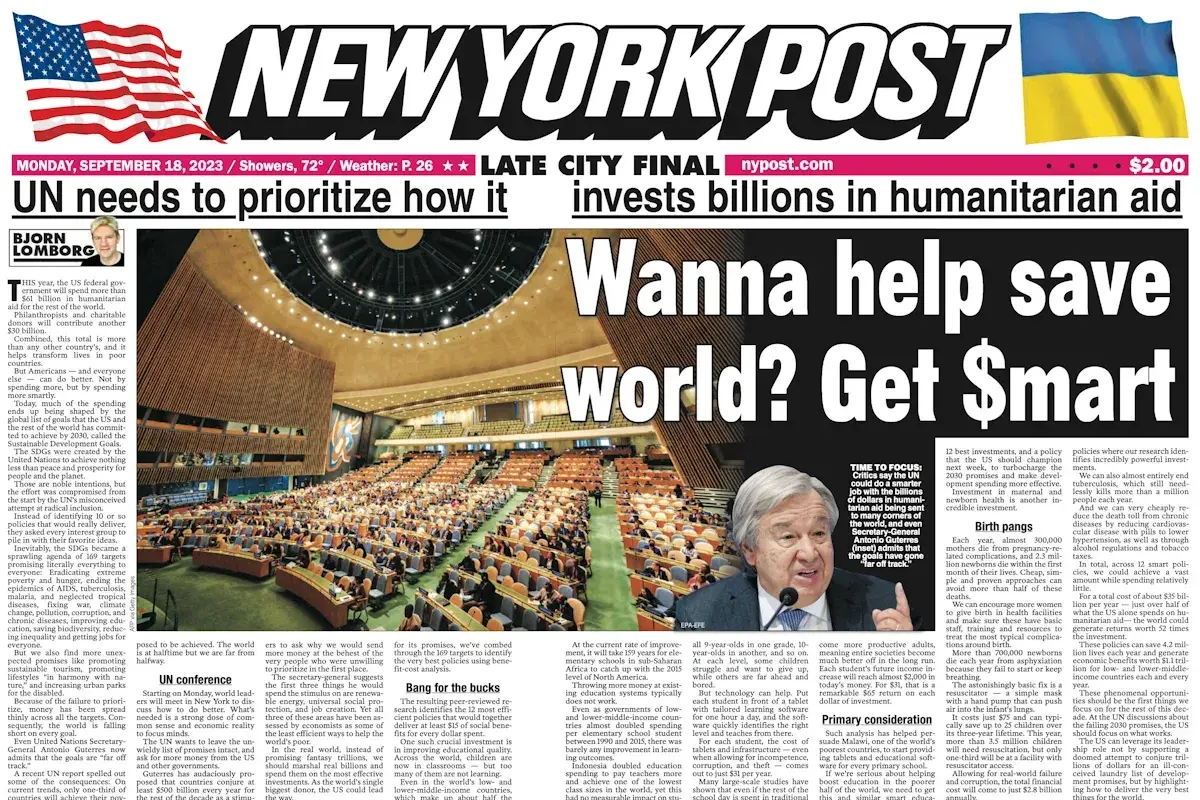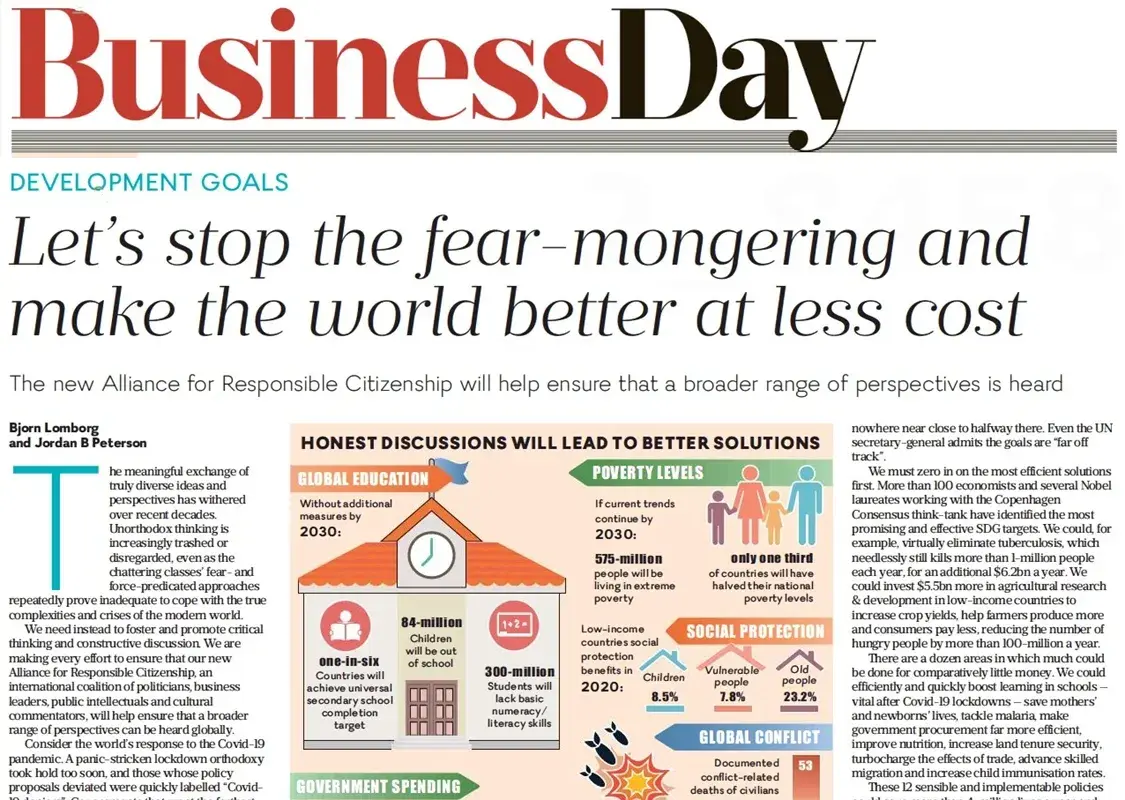Interventions not meeting the $15 return on the dollar criteria
Again, we have set the lower limit for what we look at in this project at $15 return on the dollar. We have gone back to all the best policies we looked at in 2015, to see if they would still deliver phenomenal returns.
Some, like expanded cell phone connectivity which delivered 17-times back on the dollar in higher economic growth in 2015, have faded: with much higher coverage now, it is likely additional investments would be much less incredible. Focusing here would likely still deliver more than a dollar of benefits per dollar spent, but likely much lower than $15.
Similarly, in 2015 we found that some projects to protect biodiversity had phenomenally high benefit-cost ratios. In particular, setting up protected marine areas had relatively low costs and would safeguard fish hatcheries, leading to more fish being available in the longer run, while also delivering more biodiversity benefits along with more eco-tourism. Unfortunately, more recent scientific studies have shown that previous research had left out crucial costs. As marine parks were set up, the current fishermen (who were often indigenous) incurred significant costs because they could no longer fish in these areas. The total benefits are still likely larger to society than the costs, but instead of delivering $24 of benefits for each dollar of cost, it is more likely that they only deliver a few dollars back on each dollar.
We also looked at policies that weren’t quite at $15 in 2015, to see if better technology or new innovations might have increased their BCR. While heart medication back then only was found to deliver $7 back on the dollar, cheaper medication, more streamlined screening, and less costly medicine reviews now makes this a phenomenal investment at $16.
Other widely desired policies remain less-than-phenomenal. This does not mean they do no good, but simply that their solutions are costlier and deliver less benefits per dollar than the very best policies. One good example is access to clean drinking water and sanitation, which affects billions. Lack of access to water has huge time costs, especially for women, to fetch drinking water from far away, and missing sanitation increases infectious diseases. However, delivering drinking water is quite costly so it typically delivers four-times back on the cost.
Sanitation is even harder. Not only is it quite investment-heavy, but toilets also have to be kept clean daily at significant cost to ensure that they keep being used. Moreover, the disease benefits are surprisingly small, because a substantial reduction in disease requires a complete elimination of fecal contamination, not just a marginal reduction. In total, sanitation is still a worthwhile ambition, but delivers a much lower $3 back on the dollar.
Climate change is another significant concern. While the problem is definitely real, most policies deliver only modest benefits per unit of cost. Delivering a globally coordinated, efficient carbon tax would only produce about $2 of benefits for each dollar of cost. Most strong climate policies struggle to produce more benefits than costs.
Moreover, climate change is an extreme example of costs now and benefits much later (a bit like education). According to one study, benefits from climate policies will first outweigh costs after 2080, while another study finds it won’t do so before next century. That means that benefits cannot substantially outweigh costs unless discounting is very small or non-existent, which means saying the future is relatively more important compared to the present. Not only is this not how the poorer half of world actually prioritizes. It would also dramatically ramp up most other priorities. Investments in education now wouldn’t only benefit the next generation, but it would also lay the foundation for much greater development for many future generations. If we actually modelled and aggregated all these benefits almost undiscounted for the next many centuries, they would become gigantic. Likewise, saving people from dying from tuberculosis today, would not only save lives today, but make societies more productive, driving up long-term growth that would explode future benefits.
Many other goals like peace or no corruption are similarly widely desired but often have few or no effective policies. We worked with economist to estimate the benefits and costs of different peace efforts. The fundamental point was that while peace is obviously very valuable it is tremendously difficult to ensure peace in general, i.e. specific, even very costly policies has little or no known ability to reduce the risk of war. One policy that stood out out was peace-keeping forces that are put in after a peace treaty has been concluded. This can reduce the likelihood of backsliding towards war once again, delivering large benefits of avoided conflict and economic depression, but unfortunately also at quite high costs. The benefit-cost ratio was estimated at about 5.
Corruption is hugely costly and its eradication would be very beneficial. However, in general policies to avoid corruption have a poor track record. Just one policy stands out, which is e-procurement, making government purchases slightly harder to corrupt. This turns out to be very effective, and is one of the 12 policies to follow.




